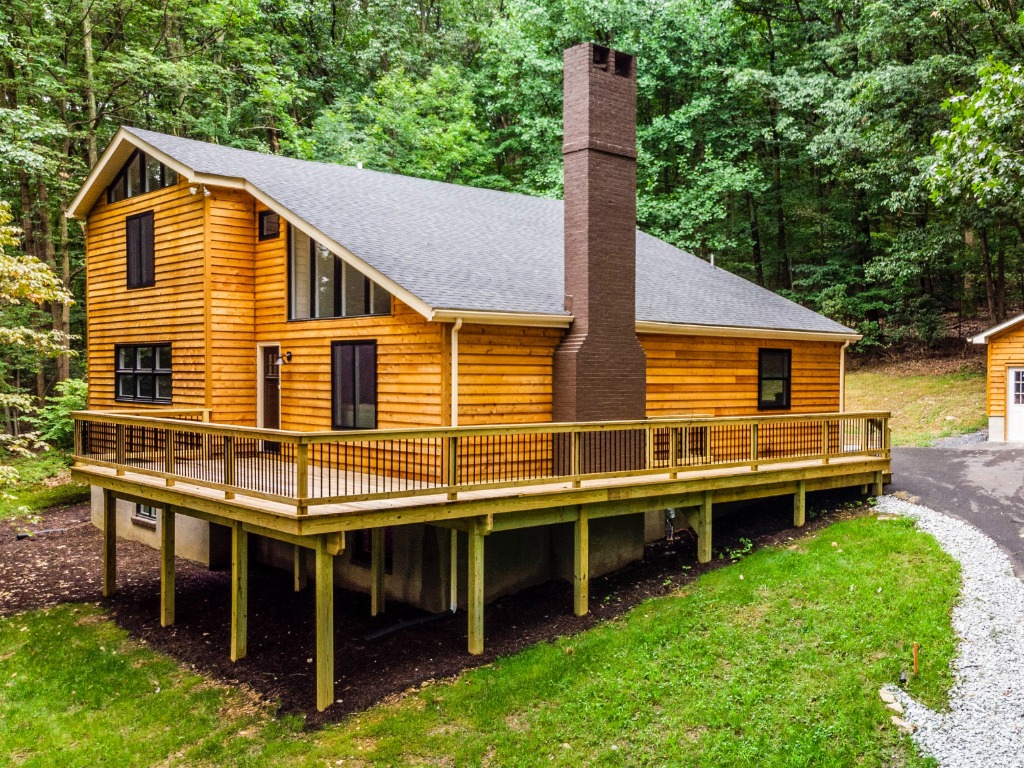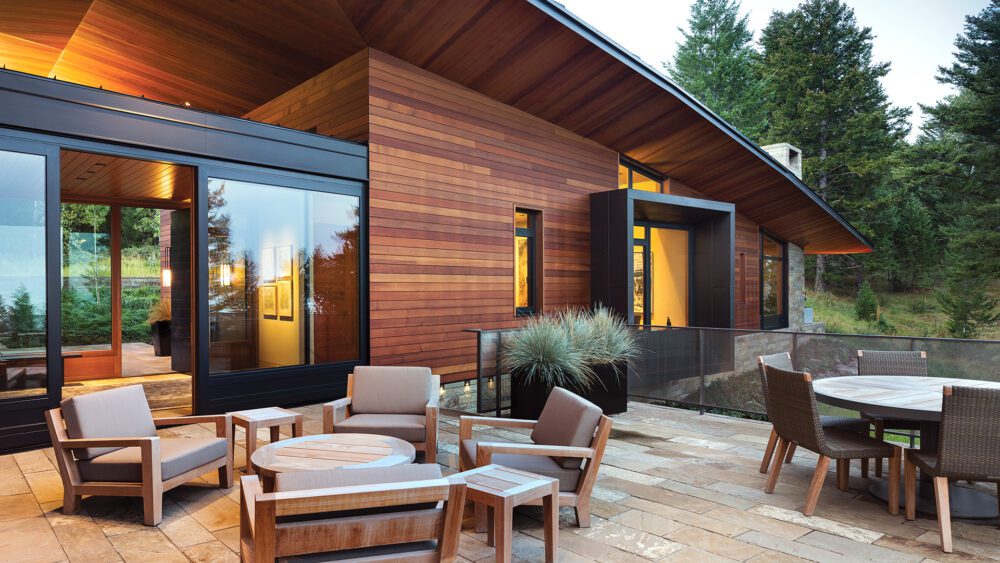Published on: September 25, 2023

Cedar is a beautiful wood. It is fragrant and provides a unique home exterior. But cedar siding also comes with many headaches and challenges. Thankfully there are many outstanding options for achieving the look of cedar without using real wood that may rot in the especially wet Washington climate.
Any type of wood siding creates a traditional appearance. And while that’s often delightful to the homeowner, eventually the maintenance begins and the homeowner’s excitement at having real wood siding tends to dissipate.
Cedar is one of the most common woods to use in siding, but that doesn’t make it the best material option, no matter the appearance you’re trying to pull off. Here’s a look at why you might consider fiber cement or vinyl alternatives to still accomplish the wood appearance you’re looking for.
When you want to do the very best for your home, you might consider the most expensive exterior finishings, such as using real cedar siding. But expense doesn’t always indicate protection and security. Here’s a look at some reasons you might avoid cedar siding.
Although cedar is one of the most durable woods available, that still doesn’t mean it’s the best material to put on your home. That’s because it is still limited in its longevity.
Once your siding is installed, you’ll need to maintain it meticulously if you hope to get any time out of it. When done correctly, you can get many decades out of cedar. But the maintenance requirements are intensive for the average homeowner.
Additionally, you need an installation crew that knows the complications cedar can present. For example, you can’t install it too close to the ground or it will take on groundwater and rot quickly. Plus, installing cedar around windows and doors requires care because this is another area where moisture can accumulate and the wood can rot.
Protecting your real wood means applying paint or stain on the wood frequently. The challenge is, the paint and stain will chip within a few years due to exposure to UV rays from the sun. And once the paint or stain chips, it leaves your wood surface open to the elements, which can lead to warps and rotting.

As you’ve compared siding, you’ve likely seen how cedar can last decades, which is longer than vinyl or fiber cement. And while that’s true, you have to achieve perfect maintenance to earn those decades of longevity.
If you install cedar on your home, be ready to get on a ladder every few years to scrape and paint the siding. Or have the pocketbook to pay someone else to do it every few years.
Scraping off old paint and adding new is a crucial element in preventing moisture issues. Plus, it will keep your siding looking great to offer the greatest curb appeal. It won’t take long for your siding to chip, peel or look run down from exposure to the elements. That can lead to homeowner association fees due to an unattractive home or to a lower resale value if you try to sell the home.
While planning for spending time on a ladder scraping and painting the siding, also know that cedar requires a primer before painting, which will add to the time the whole process takes.
Depending on your priorities when re-siding your home, you might also consider the eco-friendliness of your siding. Sadly, cedar is not the most eco-friendly the more you dig into how it is manufactured.
While you won’t need to dispose of it in any special way once you remove it from your home, it can still result in negative impacts on the environment.
To make the siding, manufacturers must harvest many trees, which are a precious resource and forests are becoming depleted. And while there are many protections in place for forests and the environment when harvesting the wood, many companies do not follow those guidelines.
Regularly painting and staining the wood also has some environmental consequences due to the VOCs emitted into the air during the process. Then there’s the challenge of needing to replace rotting sections frequently, which requires harvesting more trees. And if you don’t care for the siding meticulously, you’ll need to replace it every 15 years or so, which leads to more harvesting.
That’s not to say no one should ever install cedar on their home. But it is something to consider and keep in mind as you look at various manufacturers and providers to see whether they meet basic eco-friendly guidelines.
With cedar, you’ll likely have times when you don’t love the look of your home. Certain sections will be eyesores for you and you’ll consider regularly how you need to get on a ladder and attend to it.
Whether it’s the appearance of chipping or peeling paint or a few sections with rot, you’ll likely not be satisfied with the side for very long before it’s time to care for it once again.
Real wood won’t be as diverse as some of your other siding material options. You can get it in horizontal lap siding or cedar shingles. But that’s about the only style you can achieve with the material. Some rare manufacturers also make it in a board and batten style, but you’ll have to look hard and ask around to find that.
You’ll be limited in the visual you can achieve with the siding, which might be challenging for some architectural styles. Contemporary homes generally don’t lend themselves to using cedar for this reason.
Now that you know some of the limitations cedar presents, review some alternatives for how to achieve a similar appearance but with lower maintenance requirements and a more consistent appearance.
Fiber cement is a wood alternative that offers many great benefits. You can get this material in shakes and shingles, which imitate real wood in appearance. As far as durability goes, the siding will hold up without the crazy maintenance requirements real wood presents.
You can also get the wood look-alike in architectural panels to match any home style. It is insect and flame repellent to protect your home longer than wood. You’ll also find that it is not as susceptible to moisture, meaning you won’t look up at your home and think about how you need to replace certain sections to make your home’s curb appeal really pop again.
From the factory, you can get the material primed and painted or just primed so you can achieve the perfect appearance you’re looking for. The paint will last much longer than it does on wood, keeping your home vibrant longer.
Plus, you’ll get a 30-year warranty on your purchase. The siding is versatile, durable and attractive to create the home appearance you want.
Up close, you’ll be able to tell that you have vinyl siding so it’s not a one-for-one replacement. But you can accomplish shake and shingle appearances that look good from the road while enjoying the low maintenance vinyl provides.
Vinyl won’t require painting or sealing. If you power wash it every few years to reduce mold build-up and dirt, you’ll have a great looking home for about 30 years without needing to do anything else to care for it.
If you aren’t quite sure about the best materials for your home’s siding, it’s time to meet with the experts. 2FL Windows, Siding and Roofing will come to your home for an estimate and discuss the benefits various siding materials provide and how well they might work for your home and your style goals. Schedule your free in-home estimate today.
Further Reading:
Comments are closed.

Read the latest articles about siding.

[…] Cedar Siding in Seattle, WA and Surrounding Area […]
[…] Cedar Siding in Seattle, WA, and the Surrounding Area […]
[…] Cedar Siding in Seattle, WA, and the Surrounding Area […]
[…] Cedar Siding in Seattle, WA, and the Surrounding Area […]
[…] Cedar Siding in Seattle, WA, and the Surrounding Area […]